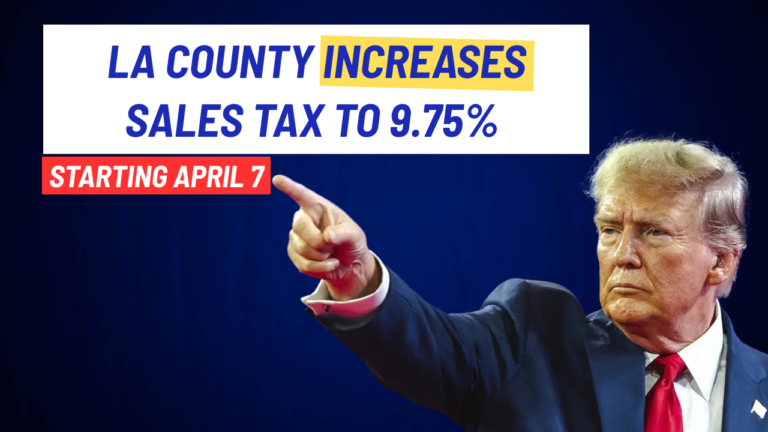Which States Have the Highest and Lowest Minimum Wages?
The minimum wage in the United States varies widely by state, reflecting differences in cost of living and labor policies across the country. In 2024, Washington, California, and Massachusetts lead with the highest minimum wages, with rates reaching $15.00 or more per hour, while states like Georgia and Wyoming remain at the lowest, below the federal minimum of $7.25. Understanding these differences is essential for both employees and employers, as state-level minimum wage rates impact local economies, job markets, and the purchasing power of workers.
What Is the Federal Minimum Wage?
The federal minimum wage, established by the Fair Labor Standards Act (FLSA), currently stands at $7.25 per hour, a rate that has not changed since July 2009. While this serves as a baseline for many states, a majority have chosen to implement their own minimum wage rates above the federal standard, citing factors such as inflation, cost of living, and living wage needs.
Which States Have the Highest Minimum Wages?
Some states have taken a proactive approach to establish minimum wages significantly higher than the federal level, aiming to help workers afford the rising costs of housing, healthcare, and daily expenses. Here’s a look at the top-ranking states for minimum wages as of [July 2024]:
| State | Minimum Wage (Hourly) | Effective Date |
|---|---|---|
| Washington | $15.74 | January 2024 |
| California | $15.50 (for large employers) | January 2024 |
| Massachusetts | $15.00 | January 2024 |
| New York | $15.00 (NYC, Long Island, Westchester) | January 2024 |
| Connecticut | $15.00 | June 2023 |
Washington: Leading the Pack
Washington leads the country with a minimum wage of $15.74 per hour, the highest statewide minimum wage in the U.S. This rate reflects adjustments based on the Consumer Price Index (CPI), ensuring that minimum wage levels keep up with inflation.
California: Variations by Employer Size
California sets its minimum wage at $15.50 for employers with 26 or more employees, with a slightly lower rate for smaller employers. Major cities like San Francisco and Los Angeles often set higher local minimum wages.
Which States Have the Lowest Minimum Wages?
Several states have maintained the federal minimum wage of $7.25 per hour, often due to legislative decisions or economic conditions that discourage wage increases. Here are states with the lowest minimum wages:
| State | Minimum Wage (Hourly) | Effective Date |
|---|---|---|
| Georgia | $5.15 (limited coverage) | Ongoing |
| Wyoming | $5.15 (limited coverage) | Ongoing |
| Federal Minimum Wage | $7.25 | 2009 |
Georgia and Wyoming: Exceptionally Low Minimums
Georgia and Wyoming are outliers with state-level minimum wages set at $5.15 per hour, which is lower than the federal minimum. However, in both states, employers subject to the FLSA must pay the federal rate of $7.25 per hour.
How Do Cities Influence Minimum Wages?
Local governments, especially in high-cost urban areas, often establish higher minimum wage rates than their respective state minimums. Cities like Seattle, WA, and San Francisco, CA are examples, with rates exceeding $16.00 per hour. These local ordinances aim to address specific cost-of-living challenges faced by residents in urban settings.
Key Examples of City-Specific Minimum Wages
- Seattle, WA: Minimum wage of $18.69 for most workers
- San Francisco, CA: Minimum wage of $16.99
States Ranking According to Wage
| Rank | State | Minimum Wage (Hourly) |
|---|---|---|
| 1 | Washington | $15.74 |
| 2 | California | $15.50 (for large employers) |
| 3 | Massachusetts | $15.00 |
| 4 | New York | $15.00 (NYC, Long Island, Westchester) |
| 5 | Connecticut | $15.00 |
| 6 | Oregon | $14.20 |
| 7 | Colorado | $13.65 |
| 8 | Arizona | $13.85 |
| 9 | Maine | $13.80 |
| 10 | New Jersey | $14.13 |
| 11 | Maryland | $13.25 |
| 12 | Florida | $12.00 |
| 13 | Vermont | $13.18 |
| 14 | Hawaii | $12.00 |
| 15 | Rhode Island | $13.00 |
| 16 | Minnesota | $10.59 |
| 17 | Delaware | $11.75 |
| 18 | Nevada | $11.25 |
| 19 | Illinois | $13.00 |
| 20 | Michigan | $10.10 |
| 21 | Missouri | $12.00 |
| 22 | Virginia | $12.00 |
| 23 | New Mexico | $12.00 |
| 24 | Alaska | $10.85 |
| 25 | Ohio | $10.10 |
| 26 | Montana | $9.95 |
| 27 | South Dakota | $10.80 |
| 28 | Arkansas | $11.00 |
| 29 | Nebraska | $10.00 |
| 30 | Pennsylvania | $7.25 |
| 31 | South Carolina | $7.25 |
| 32 | Louisiana | $7.25 |
| 33 | Tennessee | $7.25 |
| 34 | Mississippi | $7.25 |
| 35 | Alabama | $7.25 |
| 36 | Wyoming | $5.15 |
| 37 | Georgia | $5.15 |
Why Do Minimum Wages Vary So Much by State?
Multiple factors contribute to the wide range of minimum wages across the U.S. Some of these factors include:
- Cost of Living: States with higher living costs tend to set higher minimum wages to allow workers to afford basic necessities.
- Political Climate: States with a progressive political landscape are more likely to pass minimum wage increases.
- Economic Conditions: Some states cite economic constraints or concerns for small businesses as reasons for maintaining lower minimum wage rates.
- Legislation: Voter referendums or legislative actions are often required to adjust minimum wage levels, leading to variation across states.
What States Have Scheduled Minimum Wage Increases?
Several states have established schedules for gradual increases to their minimum wage. These increases are designed to address inflation and gradually align the minimum wage with the cost of living.
| State | Scheduled Increase | Targeted Minimum Wage | Completion Date |
|---|---|---|---|
| Florida | $1 per year | $15.00 | 2026 |
| Illinois | $15.00 by 2025 | 2025 | |
| New Jersey | Annual increases | $15.00 | 2024 |
| Virginia | To reach $15.00 | 2026 |
What’s the Impact of Minimum Wage on Workers and Businesses?
For Workers:
Higher minimum wages generally lead to improved financial security for low-income earners, allowing them to afford basic living expenses. Studies have shown that workers in states with higher minimum wages report better living conditions, less dependency on government assistance, and a reduced poverty rate.
For Businesses:
Higher minimum wages can lead to increased payroll costs for businesses, especially small businesses. However, many studies suggest that higher wages can improve employee retention and productivity, leading to a more stable workforce.
How Does Inflation Affect Minimum Wage Adjustments?
With inflation eroding purchasing power, states like Washington and Colorado have implemented automatic annual adjustments based on the Consumer Price Index (CPI). This ensures that minimum wages keep pace with inflation, preserving the real value of earnings for workers.
States with CPI-Linked Minimum Wages
- Washington: Adjusts annually based on CPI, currently $15.74
- Oregon: CPI-linked, adjusted each July
Will More States Raise Minimum Wages in the Future?
Many states are exploring proposals to raise the minimum wage, with support from advocates who argue for a living wage aligned with modern costs of living. As of 2024, over 30 states have minimum wages higher than the federal minimum, and this number may continue to rise as inflation and economic conditions change.
Final Thought
Understanding minimum wage laws can provide insight into economic policies, labor rights, and the financial challenges faced by American workers. While states like Washington and California lead with some of the highest minimum wages, others, such as Georgia and Wyoming, lag behind with significantly lower rates. The trend toward higher state and city minimum wages highlights a growing recognition of the need for fairer compensation in response to rising living costs.
FAQs
What is the highest minimum wage in the United States in 2024?
Washington holds the highest minimum wage in 2024, set at $15.74 per hour. Other high-ranking states include California and Massachusetts, each with minimum wages over $15.00 per hour.
Which states have the lowest minimum wage?
The states with the lowest minimum wage are Georgia and Wyoming, each at $5.15 per hour, below the federal minimum. However, federal minimum wage laws require most workers in these states to be paid at least $7.25 per hour.
Why do minimum wages differ from state to state?
Minimum wage variations are due to each state’s cost of living, economic conditions, and labor policies. States with higher living costs often set higher minimum wages to help workers afford essentials.
What is the federal minimum wage in the United States?
The federal minimum wage is $7.25 per hour. States with higher minimum wages enforce their own rates, while states with lower rates or no minimum wage law default to the federal minimum.
Are any states planning to increase their minimum wage soon?
Yes, many states have scheduled annual minimum wage increases. These increases are often based on inflation rates or set through legislative actions to keep up with the rising cost of living.
How does the minimum wage impact the economy of each state?
Higher minimum wages generally boost local economies by increasing workers’ purchasing power. However, they can also affect small businesses, potentially leading to higher prices or reduced hiring in some cases.
How can I find out if my state is planning to raise the minimum wage?
State labor department websites regularly update minimum wage laws and future increases. You can also follow local news or check for legislative updates on minimum wage changes.
Do cities have different minimum wage laws than their states?
Yes, some cities set higher minimum wages than the state rate. For example, Seattle has a minimum wage higher than Washington State’s rate due to its high cost of living.
Which states have minimum wages tied to inflation?
States like Colorado, Arizona, and Washington tie their minimum wage rates to inflation. This means the minimum wage can increase annually based on the Consumer Price Index.
What are the benefits of a higher minimum wage?
Higher minimum wages can improve the quality of life for low-income workers, reduce poverty, and stimulate economic growth through increased consumer spending.
Is there a national push to raise the federal minimum wage?
There have been ongoing discussions about raising the federal minimum wage to align with living costs. However, changes at the federal level require congressional approval and can be subject to political debate.







